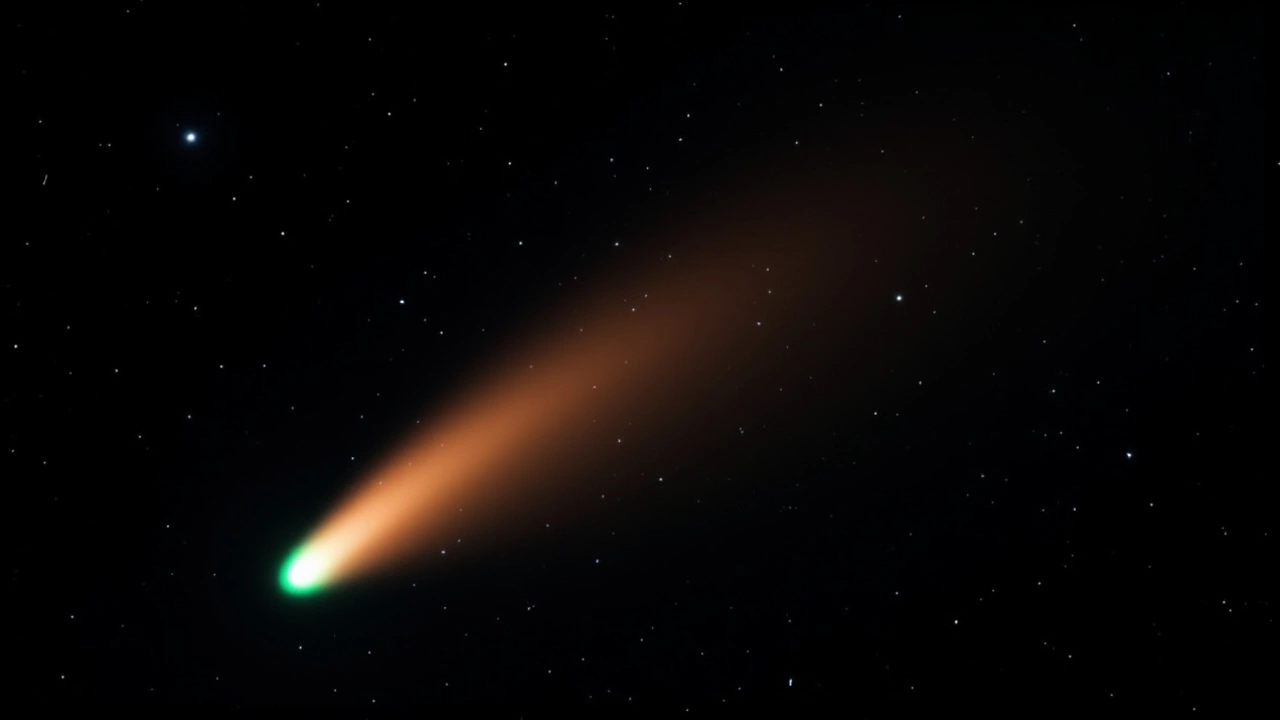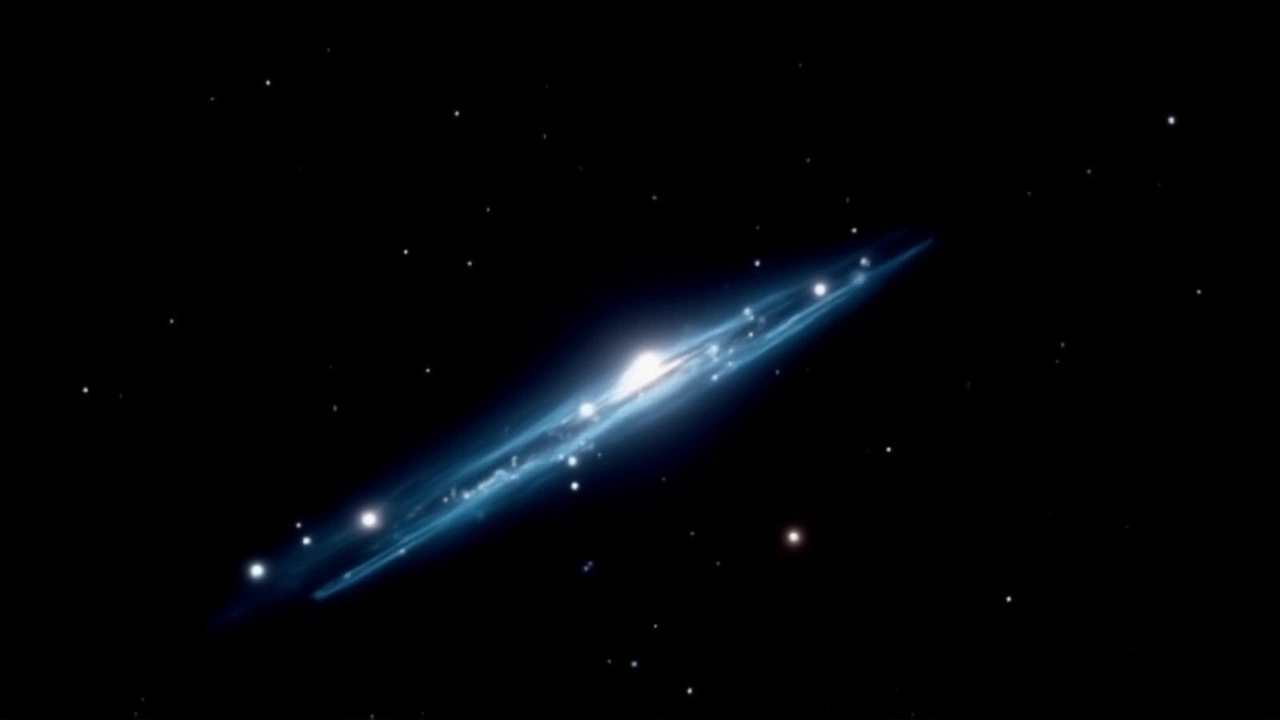When NASA released its September 30, 2025 statement, it said the newly discovered interstellar object 3I/ATLAS posed no danger to Earth. The claim came just days after a viral post from a Japanese group, shared by the @RealTruthDoctor handle, circulated alleged footage of the object as a massive vessel. Discovered on July 1, 2025 by the ATLAS survey in Chile, the comet will pass within 1.8 AU of Earth and swing past Mars on October 3, 2025. That's why the story matters: it pits official agency data against a swirl of conspiracy‑laden speculation.
Discovery and NASA’s Official Assessment
The Discovery of 3I/ATLASChile was recorded by a 0.5‑meter telescope atop the Cerro Tololo Inter‑American Observatory. NASA’s Jet Propulsion Laboratory (JPL) quickly catalogued the trajectory, confirming a hyperbolic orbit that unmistakably points to an origin outside the solar system. According to the JPL Small‑Body Database, the object's perihelion distance is 0.88 AU, and its closest approach to Earth will be about 1.8 AU – roughly 170 million miles – well outside any impact corridor.
In its September 30 briefing, NASA emphasized three points: the object is natural, it presents no collision risk, and existing monitoring assets – Hubble, the James Webb Space Telescope, and the newly‑launched SPHEREx – are already gathering spectral data. The agency also noted that the interstellar object will become observable again in early December 2025 as it emerges from behind the Sun.
Viral Claims and the Japanese ‘Vessel’ Footage
Meanwhile, a handful of Twitter threads amplified a claim that a Japanese research collective had leaked video allegedly showing 3I/ATLAS as a "large vessel" rather than a cometary nucleus. The original post, dated October 26, 2025, featured a grainy clip of a bright, elongated object against a star‑filled background, with the caption: "Proof that 3I/ATLAS is a spacecraft." No independent astronomer has verified the source, and the video’s metadata is missing, raising doubts about its authenticity.
Experts point out that the visual characteristics described – a distinct metallic sheen and a steady, non‑rotating shape – are inconsistent with known comet behavior, which typically exhibits a fuzzy coma and a tail pointing away from the Sun. "What we’re seeing are likely processing artifacts," said Dr. Elena Martínez of Spain’s University of A Coruña, who is leading a peer‑reviewed simulation study on the object’s appearance.
Avi Loeb’s Controversial Commentary
Harvard professor Avi Loeb has been a vocal critic of NASA’s calm tone. In a recent podcast, he accused the agency of “selective transparency” and urged the public to demand raw data from the Mars Orbiter that allegedly captured the object near the Red Planet. "Who cares about the communication departments? We want to see the data from the scientists," he said, a quote reproduced by the International Business Times on October 25, 2025.
Loeb has catalogued eight oddities: an orbit that hugs the ecliptic plane, an unexpectedly high carbon‑dioxide-to‑water ratio (about eight‑to‑one), detectable nickel lines, cyanide signatures, and a faint green glow reported by amateur sky‑watchers. He argues that the object’s jet of gas points toward the Sun – the opposite of standard comet outgassing – a fact he calls a "one‑in‑500 coincidence" that could hint at artificial thrust.
While his claims have attracted a sizeable online following, many planetary scientists remain skeptical. "The chemistry you describe can be explained by unusual ice mixtures and solar radiation processing," noted Dr. Carlos Vega of the International Astronomical Union’s Minor Planet Center. The IAU, which oversees minor‑body designations, issued Minor Planet Circular MPC205 U142 on November 1, 2025, describing a "quiet update" to the interstellar asteroid warning network, but clarified that the language referred to routine measurement upgrades, not emergency protocols.
Scientific Community’s Response
Beyond Loeb’s outspoken stance, a growing chorus of researchers has published preliminary analyses. Spectroscopy from JWST indicates a spectrum dominated by carbon‑rich organics, with sharp absorption features at 4.3 µm consistent with carbon dioxide ice. SPHEREx data, released in early November, shows a modest nickel line at 8.3 µm, but the signal‑to‑noise ratio is low, making definitive conclusions premature.
Simulation work from A Coruña’s team suggests the object's trajectory could be the result of a close stellar encounter in the thin‑disk region of the Milky Way—a zone populated by stars up to 10 billion years old. Their models identified 93 potential past encounters, none of which exerted enough gravitational pull to dramatically alter the path, reinforcing the view that the orbit’s alignment with the ecliptic is a statistical fluke rather than engineered precision.

Implications for Planetary Defense and Future Observations
Even though NASA deems 3I/ATLAS harmless, the episode has sparked renewed public interest in planetary‑defense readiness. The interstellar asteroid warning network, originally designed to flag Earth‑crossing objects, is slated to run a global observing campaign from November 27, 2025 to January 27, 2026. The campaign aims to refine orbit determinations for all known near‑Earth objects, using a coordinated network of ground‑based telescopes.
Looking ahead, the object will swing past Jupiter on March 15, 2026, at a distance of about 1.2 AU, before hurling out of the solar system. The Europa Clipper, en route to Jupiter, will have the opportunity to capture high‑resolution images of the encounter, potentially shedding light on the mysterious composition anomalies.
What’s Next for 3I/ATLAS?
In December 2025, NASA plans to release the full spectral dataset collected by JWST and SPHEREx, enabling independent verification of the claimed metallic signatures. Meanwhile, citizen‑science platforms like NASA’s Eyes on the Solar System will continue to stream real‑time trajectory visualizations, inviting the public to track the object's progress.
Whether the Japanese‑origin footage ever proves authentic or remains a meme, the episode underscores a broader truth: interstellar visitors stir both scientific curiosity and a healthy dose of speculation. The next time an object from beyond the Sun peers through our telescopes, the debate will likely resume, but this time with even more data on the table.
Frequently Asked Questions
What evidence does NASA have that 3I/ATLAS is not a threat?
NASA’s calculations, based on observations from JPL’s Small‑Body Database, show the object will never come closer than 1.8 AU to Earth. Its hyperbolic trajectory means it will pass through the solar system and exit forever, eliminating any impact risk.
Why do some scientists, like Avi Loeb, think the object could be artificial?
Loeb points to unusual features – a jet directed toward the Sun, an orbit almost perfectly aligned with the ecliptic, and a high carbon‑dioxide-to‑water ratio. He argues these anomalies are statistically unlikely for a natural comet, suggesting intentional engineering.
Has any independent group verified the alleged Japanese footage?
No. Astronomers who have examined the clip note missing metadata and visual artifacts that resemble image‑processing errors. Without a verifiable source, the video remains unconfirmed.
What is the purpose of the interstellar asteroid warning network’s November‑January campaign?
The campaign coordinates telescopes worldwide to improve orbit precision for all near‑Earth objects, including any newly discovered interstellar visitors. It is a routine readiness exercise, not a reaction to an imminent danger.
When will we see the next detailed observations of 3I/ATLAS?
Full spectral data from JWST and SPHEREx are slated for public release in December 2025. Additional imaging from the Europa Clipper during its Jupiter fly‑by in March 2026 will provide the next high‑resolution view.
 Oct, 26 2025
Oct, 26 2025
